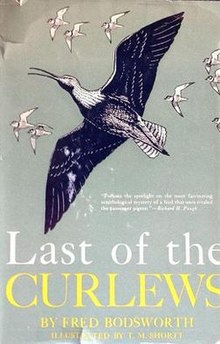The Flintstones is an American animated sitcom produced by Hanna-Barbera Productions, which takes place in a romanticized Stone Age setting and follows the titular family, the Flintstones, and their next-door neighbors, the Rubbles. It was originally broadcast on ABC from September 30, 1960, to April 1, 1966, and was the first animated series with a prime-time slot on television.
Animation in the United States in the television era was a period in the history of American animation that slowly set in with the decline of theatrical animated shorts and the popularization of television animation that started in the late 1950s, reached its peak during the 1970s, and ended around the mid-1980s. This era is characterized by low budgets, limited animation, an emphasis on television over the theater, and the general perception of cartoons being primarily for children. Due to the perceived cheap production values, poor animation, and mixed critical and commercial reception, the era is generally looked back upon negatively by critics and animation historians. The television animation of this period is often referred to as the dark age of American animation, while the theatrical animation from the time is sometimes referred as the bronze age.

The Huckleberry Hound Show is an American animated television series produced by Hanna-Barbera Productions, and the second series produced by the studio following The Ruff and Reddy Show. The show first aired in syndication on September 29, 1958, and was sponsored by Kellogg's. Three segments were included in the program: one featuring Huckleberry Hound, another with Pixie and Dixie and Mr. Jinks, which starred two mice who in each short found a new way to outwit the cat Mr. Jinks, and a third starring Yogi Bear and his friend Boo Boo. The series last aired on December 1, 1961.
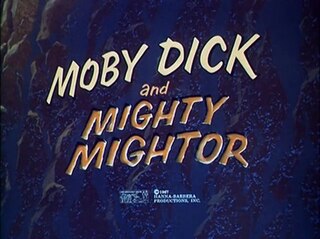
Moby Dick and Mighty Mightor is an American Saturday morning animated television series produced by Hanna-Barbera Productions that ran on CBS from September 9, 1967 to January 6, 1968, airing in reruns until September 6, 1969. Despite Moby's name coming first, he had only one short per half-hour episode, sandwiched between two with Mightor. The same structure was used the previous season for Frankenstein Jr. and The Impossibles.
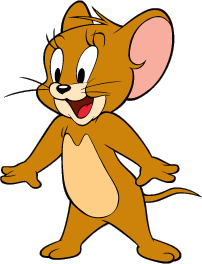
Gerald Jinx "Jerry" Mouse is a fictional character and one of the two titular characters in Metro-Goldwyn-Mayer's series of Tom and Jerry theatrical animated short films and other animated media, usually acting as the protagonist opposite his rival Tom Cat. Created by William Hanna and Joseph Barbera, Jerry is an anthropomorphic brown house mouse, who first appeared as a mouse named Jinx in the 1940 MGM animated short Puss Gets the Boot. Hanna gave the mouse's original name as "Jinx", while Barbera claimed the mouse went unnamed in his first appearance.
Tom and Jerry is an American animated media franchise and series of comedy short films created in 1940 by William Hanna and Joseph Barbera. Best known for its 161 theatrical short films by Metro-Goldwyn-Mayer, the series centers on the rivalry between the titular characters of a cat named Tom and a mouse named Jerry. Many shorts also feature several recurring characters.

The Ruff and Reddy Show is an American animated television series produced by Hanna-Barbera Productions for NBC. It is one of the earliest Saturday-morning cartoons, and the first series made by Hanna-Barbera. The series follows the adventures of Ruff, a smart and steadfast cat; and Reddy, a good-natured and brave dog. It was presented by Screen Gems, the television arm of Columbia Pictures. It premiered in December 1957 and ran for 156 episodes until April 1960, comprising three seasons total. It was repeated on NBC Saturday mornings in 1962–63. In the late 1950s it was sponsored by Post Consumer Brands.

Hong Kong Phooey is an American animated television series produced by Hanna-Barbera Productions and originally broadcast on ABC. The original episodes aired from September 7 to December 21, 1974, and then in repeats until 1976. The show was brought back in reruns in 1978 and 1981, and was included in the USA Network's Cartoon Express block throughout the 1980s. The main character, Hong Kong Phooey, is the clownishly clumsy secret identity of Penrod "Penry" Pooch, working at a police station as a "mild-mannered" janitor under the glare of Sergeant Flint, nicknamed "Sarge".
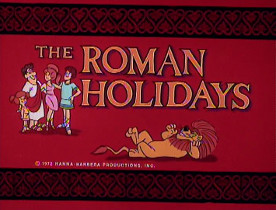
The Roman Holidays is a half-hour Saturday morning animated series produced by Hanna-Barbera Productions and broadcast on NBC from September 9 to December 2, 1972. Reruns were later shown on the USA Cartoon Express during the 1980s, Cartoon Network during the 1990s and Boomerang during the 2000s.
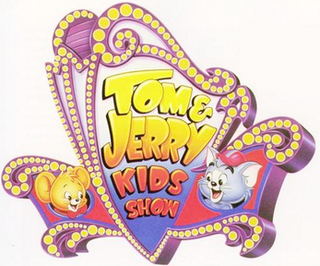
Tom & Jerry Kids is an American animated television series co-produced by Hanna-Barbera and Turner Entertainment Co., and starring the cat-and-mouse duo Tom and Jerry as toddlers. It premiered on Fox on September 8, 1990, airing as the first program of the children's programming block, Fox Kids, and was the second Tom and Jerry TV series to be produced by Hanna-Barbera following The Tom and Jerry Show in 1975.

Jeannie is an American animated television series that originally aired for a 16-episode season on CBS from September 8 to December 22, 1973. It was produced by Hanna-Barbera in association with Screen Gems, and its founders William Hanna and Joseph Barbera are the executive producers. Despite being a spin-off of sorts of the television sitcom I Dream of Jeannie, Jeannie has little in common with its parent show. In this version, the title character is rescued on the beaches of southern California by a high school student, Corey Anders. Jeannie is accompanied by genie-in-training Babu, and they become companions to Corey and his best friend, Henry Glopp, both of whom also help Jeannie and Babu adjust to their new home as well as life in Los Angeles. The series was marketed towards a younger demographic than I Dream of Jeannie.

Speed Buggy is an American animated television series, produced by Hanna-Barbera, which originally aired for one season on CBS from September 8, 1973, to December 22, 1973. With the voices of Mel Blanc, Michael Bell, Arlene Golonka, and Phil Luther Jr., the show follows an orange anthropomorphic dune buggy who alongside teenagers Debbie, Mark, and Tinker, solves mysteries while participating in racing competitions around the world. The series was produced by Iwao Takamoto, executive produced by William Hanna and Joseph Barbera, and directed by Charles A. Nichols.
Famous Classic Tales is an animated anthology television series featuring animated adaptations of classic stories and the other are classic children's stories which aired on CBS from 1970 to 1984. The series was produced by the Australian division of Hanna-Barbera and Air Programs International (API), also from Australia, but the thirtieth installment was animated by Ruby-Spears Enterprises.

Yogi's First Christmas is a 1980 American animated musical television film starring Yogi Bear and produced by Hanna-Barbera. It first aired in syndication through Operation Prime Time on November 22, 1980. Throughout the 1980s, it was offered to U.S. television stations split up one episode per day for four days as a one-week strip syndicated program, generally during the week of Christmas. The film was written by Willie Gilbert and directed by Ray Patterson.

Harlem Globetrotters is a Saturday morning cartoon produced by Hanna-Barbera and CBS Productions, featuring animated versions of players from the basketball team of the same name.
The New Alice in Wonderland is a 1966 American animated television special written by Bill Dana and produced by Hanna-Barbera. It was broadcast on the ABC network on March 30, 1966, in an hour slot. The songs were written by composer Charles Strouse and lyricist Lee Adams, who were most famous for Bye Bye Birdie. The songs were orchestrated by Marty Paich, who also provided musical direction; plus devised and arranged that part of the underscoring that was drawn from the musical numbers. The rest of the underscoring was drawn from the vast library of cues that Hanna-Barbera's in-house composer Hoyt Curtin had written for various animated series.

Huckleberry "Huck" Hound is a fictional cartoon character, a blue anthropomorphic coonhound dog that speaks with a North Carolina Southern drawl. He first appeared in the series The Huckleberry Hound Show. The cartoon was one of six TV shows to win an Emmy Award in 1960 as an "Outstanding Achievement in the Field of Children's Programming"; the first animated series to receive such an award.
The Yogi Bear Show is an American comedy animated television series and the first entry of the Yogi Bear franchise produced by Hanna-Barbera Productions that centers on the misadventures of forest-dwelling Yogi Bear in Jellystone Park. The show debuted in syndication on January 30, 1961, and ran for 33 episodes until January 6, 1962. Two other segments for the show were Snagglepuss and Yakky Doodle. The show had a two-year production run.
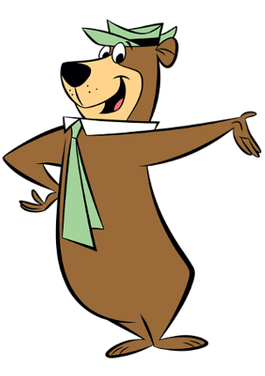
Yogi Bear is an anthropomorphic animal character who has appeared in numerous comic books, animated television shows, and films. He made his debut in 1958 as a supporting character in The Huckleberry Hound Show.
